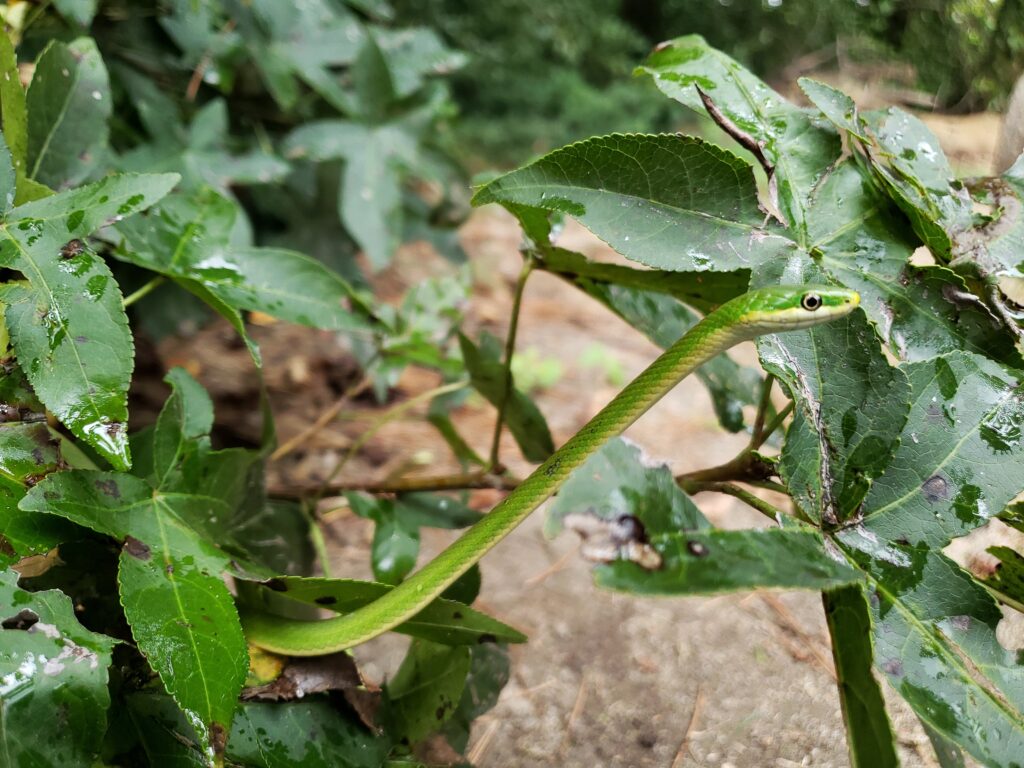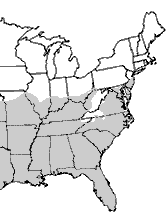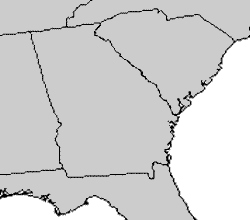Rough Green Snake (Opheodrys aestivus)



Photos by Amanda Hurst unless otherwise noted
| Description: Rough Green Snakes are fairly long – to 32 in (81 cm) – slender, bright green snakes with yellow or whitish bellies that spend much of their time climbing in vegetation. Their bright green color easily distinguishes them from all other snakes in Georgia and South Carolina but the similar Smooth Green Snake replaces this species in the Appalachian Mountains and the Northeast. Rough Green Snakes have keeled scales and large eyes. After death the color of green snakes fades to blue or black and dead individuals may resemble small black racers. Young Green Snakes resemble adults.
Range and Habitat: Rough Green Snakes are found throughout the Mid-Atlantic and Southeast from the Pine Barrens of New Jersey west to central Texas and south throughout Florida. They are common in the Piedmont and Coastal Plain but are absent from the higher elevations of the mountains. Rough green snakes can be found in a variety of habitats but are most common in open forests and edge habitats. They can be particularly abundant along the margins of wetlands and rivers, where they search overhanging vegetation for insects. Habits: Rough Green Snakes are probably the most arboreal snakes in our region and spend the majority of their time hunting for insects, spiders, and other invertebrates in vegetation well above the ground. When encountered, green snakes often freeze, relying on their green coloration for camouflage. At night, Green Snakes can often be found sleeping coiled in shrubs, vine tangles, or thick vegetation. During cool weather Green Snakes often take refuge on the ground and can sometimes be found hiding beneath logs, rocks, or debris. They mate in the spring and females lay 3 – 12 eggs in the early summer. Conservation Status: Rough Green Snakes are generally common in our region and are not protected throughout most of it. They are protected throughout the state of Georgia. Anecdotal evidence suggests that this species may be declining in some areas, particularly southern Florida. Pertinent References: Plummer, M. V. 1997. Population ecology of green snakes (Opheodrys aestivus) revisited. Herpetological Monographs 11:102-123. Account Author: J.D. Willson |
Account author: J.D. Willson
